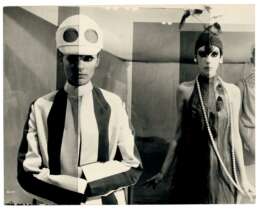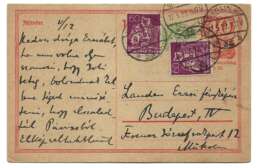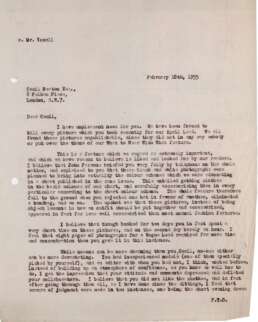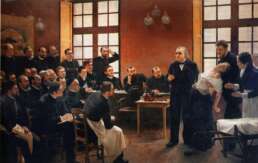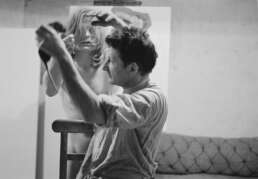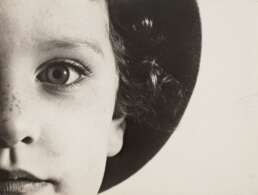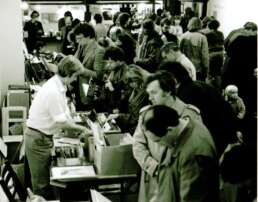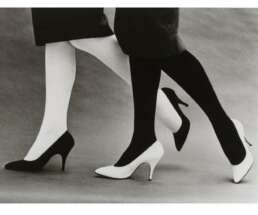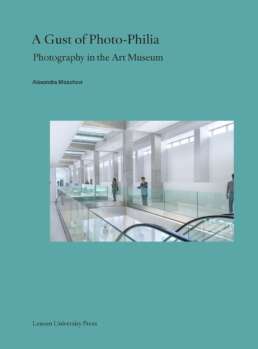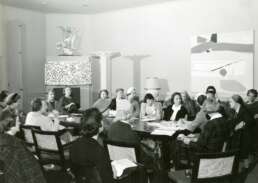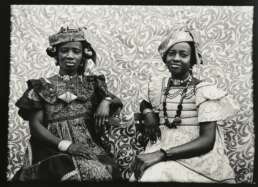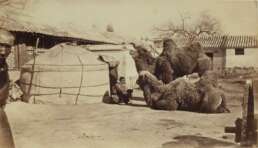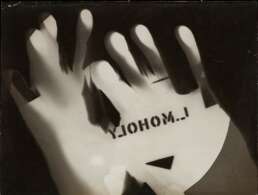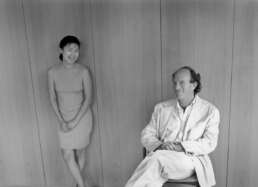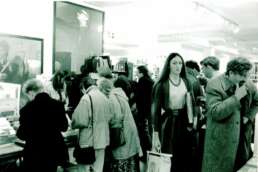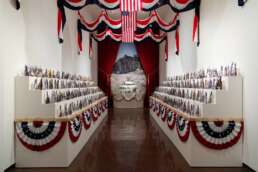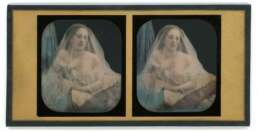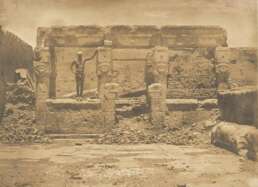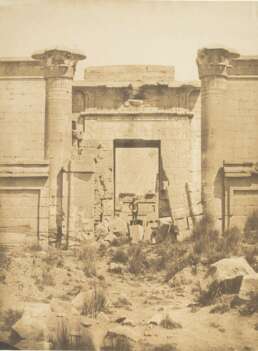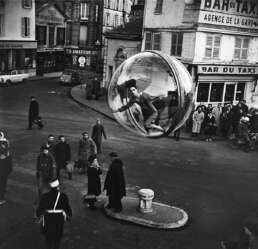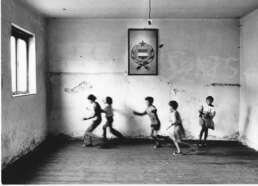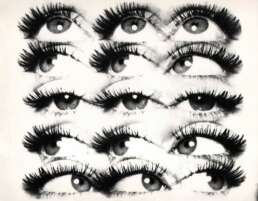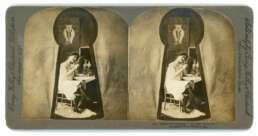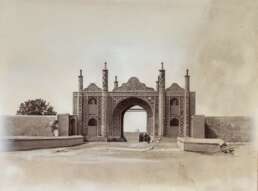Jill Kennington
Model Years
The Story of a Memoir
She was part of the process, and we have, in no particular order, John Cowan, Helmut Newton, William Klein, Saul Leiter, Richard Avedon, Guy Bourdin, David Bailey, Norman Parkinson, John French, Bert Stern, Bob Richardson, David Montgomery; the list goes on. It's a hell of a roster, of the Sixties going into the Seventies.
Letters from Lázsló Moholy-Nagy to Erzsi Landau
The relationship between László Moholy-Nagy and Erzsi Landau is still surrounded by a certain mystery. Some photo historians say they were simply good friends, while others say their relationship was much more than that, suggesting that Erzsi Landau may have been the one taught Moholy-Nagy the basics of photography.
“Problems, problems” – Letters to and from Photographers
After a series of poorly received stories, editor Audrey Withers wrote this letter, informing Cecil Beaton that she had had to kill every picture he had taken for the story
La Salpêtrière – Fact, fiction and speculation about Blanche Wittmann
“Listen, Blanche. I know there are things you don’t want to talk about, but you’ve known me for a long time and you know that I have no intention to make fun of you. I’d like you to explain something about the attacks you used to have.”
Rose Boyt – A proposal from Andy Warhol, friends in the bath, and posing for her father, Lucian Freud
Andy took me to Studio 54 and introduced me to the door staff so I could get in any time I wanted to party. Out of the blue he asked me to marry him, a proposal both of us knew would not lead to anything, although I was pleased to receive his seal of approval.
Masterworks of Modern Photography 1900-1940: The Thomas Walther Collection at The Museum of Modern Art, New York. Exhibition at Jeu De Paume 14 September 2021 – 13 February 2022
Known throughout the photography as having "the eye", many would add that he has the gift like no other for getting to the essence of a photograph.
The London Photograph Fair – 40 Years On
2022 will mark the fortieth anniversary of the establishment of the London Photograph Fair. Its first outing was on Sunday September 12th 1982, and it was held at the Photographers’ Gallery in Newport Street, just off Charing Cross Road.
“Talking French”
A conversation with Philippe Garner about the British fashion photographer
John French
French’s images pack their punch precisely because of their essential simplicity; but this apparent simplicity was hard won, underpinned by the high technical standards that he set.
A Gust of Photo-Philia: Photography in the Art Museum
by Alexandra Moschovi
Where does photography stand in today’s art museum? And how did it arrive there?
The Democratic Picture: Grace McCann Morley and Photography in the San Francisco Museum of Art
The San Francisco Museum of Art opened its doors on the top floor of the War Memorial Veterans Building in 1935.
The African Lookbook: A Visual History of 100 Years of African Women
by Catherine McKinley
McKinley began collecting African studio photography while traveling in West Africa in the early 1990s.
History of Photography in China: New Discoveries and Research
China in the 19th century was not an easy place for foreigners to travel with and use their cameras.
Ecstatic Light:
Renate Heyne on Moholy-Nagy’s Photograms
With his name added this image says “I, Moholy, am shaping light with my hands” or “I grasp the light”.
In Memoriam:
Daniel Wolf 1955-2021
Daniel Wolf was one of those giants in photography who played a major role in the development of our profession.
In Memoriam:
Janette Rosing 1942 – 2021
She made collecting things in various fields her life’s work, and saw it as in some way akin to the rewards of having a family, with each member looked after by being carefully preserved and immaculately annotated in her tiny pencil script.
Wendy Red Star at Joslyn Art Museum:
Re-examining The Indian Congress 1898.
An Interview with Annika Johnson, Associate Curator of Native American Art
In the summer of 1898, over 500 citizens of 35 Native American nations gathered in present-day North Omaha to participate in the Indian Congress.
Antonia Gotte:
A Much Photographed Model
At some point in her modelling career Antonia accepted to sit for photographers and used as she was to unveiling for painters did not think twice before doing the same in front of the camera.
“La Maison démolie”
Photographs of Egypt by Maxime Du Camp 1849-1850
The enigmatic figure photographed among the ruins flickers throughout the texts, like a protagonist in a film, somehow connected to the plot, but never fully developed and seen only in disconnected glimpses.
The in visibility of Hadji-Ishmael: Maxime Du Camp’s 1850 photographs of Egypt
Du Camp’s sense of disorder and disjunction did leave its traces. One such trail appears intermittently throughout the photographs, a cypher that appears, disappears and reappears.
Bubble and Fly:
The Making of Two Iconic Fashion Stories
She studied it, smiled, and remarked, "You’re going to fly it over the Eiffel Tower, yes?" Suppressing a grin, I said, "Maybe."
György Stalter’s Manufacture and Tólápa:
Two Projects About Roma
These picture are subjective, they reflect me, my relationship with the world surrounding me, my vulnerability, my emotions, as well as the people who have collaborated with me.
How David Attie invented Photoshop in the 1950s – and had his career launched by Truman Capote
Brodovitch loved the montages. In fact, he spent the entire class gushing over them.
What Did the Victorians See in the Stereoscope?
It soon became evident that, thanks to the stereoscope, a large number of people who could not afford the expense of going on a Grand Tour, could at least buy stereo cards of the places they wished to visit.
The Epidemic Conflagration
During the epidemic that took place during the winter of 1910-1911, some 60,000 people were struck down by a pulmonary form of the disease that invariably proved fatal.
Images of Persia
Du Khorassan au pays des Backhtiaris, trois mois de voyage en Perse
An exceptional archive, original photographs mostly taken by Henry-René d’Allemagne during his various archaeological, ethnographic and artistic expeditions in Persia between 1898 and 1907.


